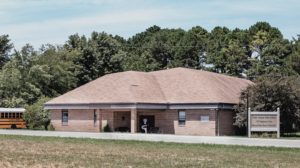Delaware to give DSHS $1M for school maps in safety effort
(The Center Square) – Bolstering school security is part of a new initiative in Delaware.
The state’s Emergency Management Agency announced Monday morning that nearly $1 million will be…

(The Center Square) – Bolstering school security is part of a new initiative in Delaware.
The state’s Emergency Management Agency announced Monday morning that nearly $1 million will be invested the Comprehensive School Safety Program to create maps of schools in the state’s 19 school districts and charter schools. The maps will be made available to law enforcement and first responders who respond to emergencies at school facilities.
“These digital blueprints and maps represent a significant, tangible investment in school safety and security throughout Delaware,” Safety and Homeland security Secretary Nathaniel McQueen Jr. said in a release. “The goal is to ensure all emergency personnel have the best tools to communicate and collaborate in a crisis – when seconds count and lives are on the line.”
According to the release, the funding is part of the $10 million allocation for the School Safety and Security Fund that was passed in 2018. The $1 million in funding will be directed to the Department of Safety and Homeland Security to produce the maps, along with a reporting application and threat assessment tools.
Delaware will partner with New Jersey-based Critical Response Group, which specializes in collecting and digitizing school building blueprints and creating maps for first responders.
The maps, according to the release, will feature grid overlays of facilities and grounds, in addition to simple communications tools to coordinate emergency responses. The maps are designed to improve response time.
According to the release, the maps will feature detailed floor plan information, including labeling rooms, give hallways names, provide external door/stairwell numbers and the location of key utilities.
Maps, according to the release, will be provided to local, county, and state emergency entities, including dispatch centers. They will also be used for training exercises, school drills, and other post-emergency processes such as unification.



